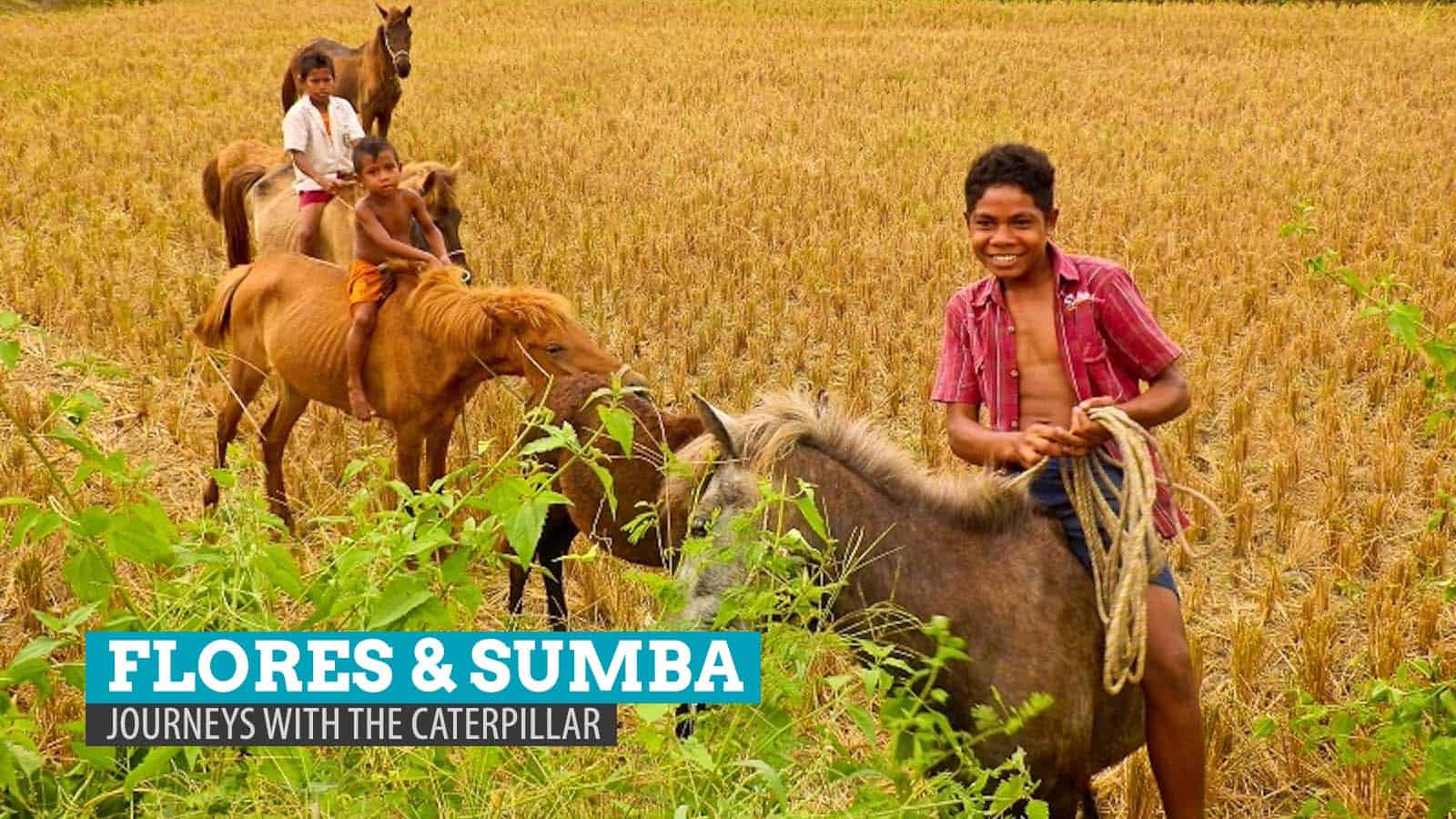Once we were back in Bali, we were brought back to the reality of a giant protected reserve for tourists with infinite stretches of neatly packed boxes of shops with glass facades, mannequins looking out of them with their contemptuous looks. After days with heart shaped toilet buckets and dim hotel lights, I was fumbling with toilet papers and getting blinded with night lights. Flores and Sumba were still deep in my mind, refusing to make way for a new world.
At both the Indonesian islands of Flores and Sumba, we came across unique traditional villages. Houses, characteristic with their husky towering roofs, are central to their culture. The villages vary in their house designs and the elaborate rituals involved in building them. And the pattern of arrangement of the houses is also unique to each village clan. However, invariably, the bottom layers of these houses are for keeping the animals, on top of which are the living areas, above which the layers are used for storage of food, preserved from insects and moisture by the smoke from the firewood stoves placed underneath. Made of wood, bamboo, and dry grass, the houses last less than thirty years and are prone to fires. But the pull of tradition is too strong. Those who build modern houses are often excommunicated.
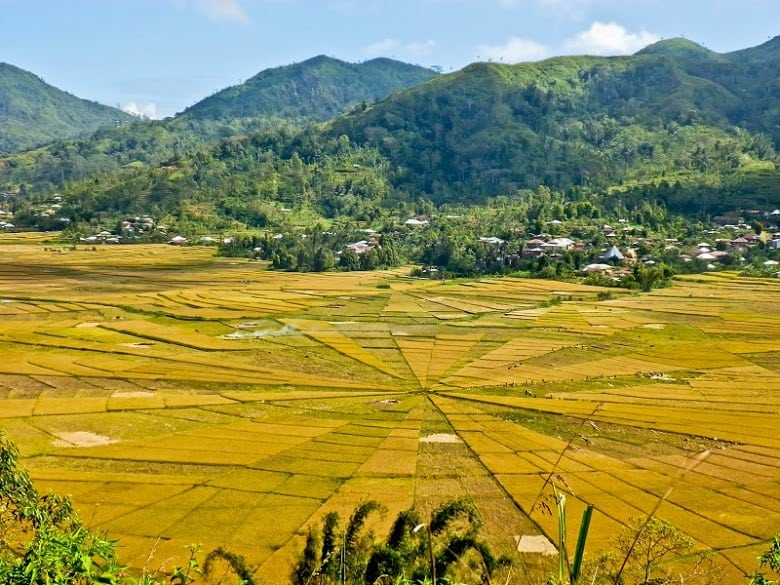
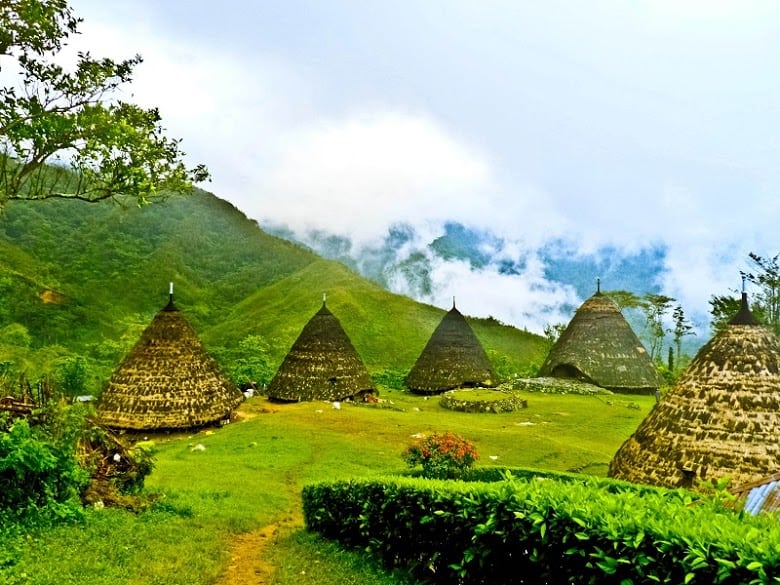
And only in Sumba and Flores, men’s fashion still gets some attention. The most expensive cloth (ikat) is given to the groom as a return gift for the bride-price. Only women are involved in ikat making, a skill that adds to her potential as a worthy bride. Making ikat is laborious; the weaver has to wait for weeks for that perfect berry to blossom in that faraway vine to get the colour her man must wear. Men are forbidden to be anywhere near the dye making process.
At Komodo and Rinca islands, we had seen Komodo Dragons begging tourists for food. There are many similarities between humans and Komodos. Their babies take nine months to come out. They also suffer from bad breath. And they are usually monogamous; almost a similarity with humans. But there are many stark differences too. There are four males for every female Komodo. And Komodo mothers can give birth asexually. Imagine the life of a Komodo male, who after overcoming all these struggles, ends up with a partner with bad breath.
At Flores, we had visited the colored lakes of Kelimutu. These three volcanic lakes change color rather whimsically. The local Lio people believe that the spirits of those who die at an old age go to reside at one of the azure lakes, of those who die young go to the one next to it, and of those who had been evil are condemned to the Coca Cola colored lake.
And how can I forget the excitement of the annual mock fight in Sumba? During the fight, called the Pasola, two teams drawn from different villages confront each other. Men dressed in traditional garb, riding horses, gallop towards opponents, throwing blunt wooden spears. The fights are usually stopped when blood spills for the first time, an event considered auspicious for the coming harvest.
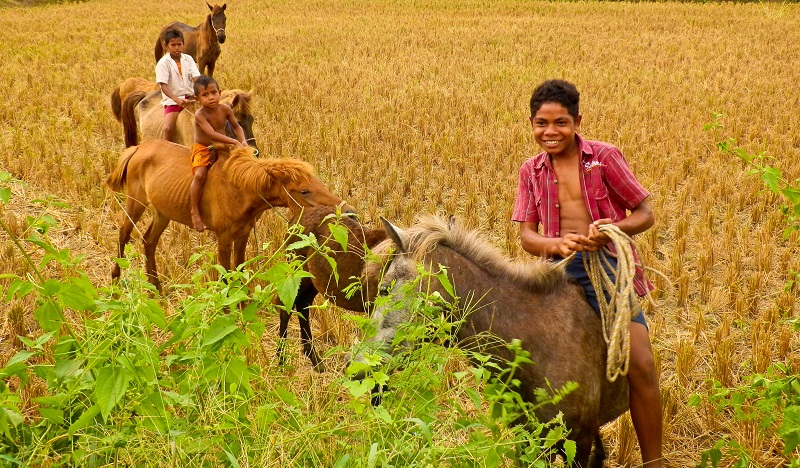
The climax of our trip was on the day we attended a funeral in Sumba. Over two hundred people had been invited. We melted at their warm welcome. But we also witnessed the sacrifice of seven buffaloes and four pigs. The locals explained that the Sumbanese believe that blood spilled in front of the house of the deceased smoothens her passage to heaven with the slaughtered animals joining her in heaven.
Despite being largely Christians, the Sumbanese still widely practice rituals from their native religion, Marapu. And according to Marapu, death is the point of escape from the world of common insignificance to an elevated realm, a few steps closer to God. Accordingly ancestors are revered a lot more than the living. Funerals are therefore extremely important occasions in Sumbanese culture involving elaborate ceremonies. Such occasions are also opportunities to send a message about the sponsor’s social standing. It is common in Sumba to build a tomb for oneself or someone else in the family who was still alive, again for the reason of sending a social signal.

The villages of Sumba have seen many battles, over slaves and land. As recently as 1998, there were bloody clashes between rival clans over the matter of disrespect shown to an important person. However, on more normal days, the Sumbanese are extremely dignified, polite, gentle and respectful. There are too many layers to a Sumbanese, a visible layer, shaped from poverty and harsh weather, a penchant for visual displays of violence, a history of bloody communal fights, stiff and rigid norms of society, codified for ages, draining lives without pause; and then there were the same faces that put down all their armoury, bravado and rigidity with the humblest of smiles, which they were ever ready to display, even if stained with a murky blood red, from the betel nut they chewed all day.
And even today, long after we came back to our home in Singapore, Mama Mena of Bajawa, a vegetable seller with a measly income, keeps messaging me asking about our health and telling us that all the ladies in her stretch of Pasar Bajawa (Market) were talking about us every day. And the Moustache Uncle of Waingapu, who sold chickens, messages us asking if we had already sent the pictures, getting anxious as the mail failed to show up at his address that just said, “John Kumis at Pasar Ayam, Waikabubak.”
Waikabubak, Waingapu, Waikelele, Waitabula, Waitabar; all those names with Wai that meant water; just like in other Polynesian languages like those used by native Hawaiian and Maori people; a remarkable connection from antiquity; so one town meant water that was boiling; another meant water that was blue; I was fast forgetting which was which.
Did the trip matter to me in any deeper way than any other holiday? Of course, there was the pleasure of not being reachable by my superiors in office, what with the erratic mobile connections in the remote places, but a lingering worry was that they were also not bothering to contact me; was I turning irrelevant? And then, I and Lobo figured out that we could tolerate each other just enough to get married. Besides these, it was invigorating to come up close with those traits of human nature that is usually suppressed in more petrified environments; the trust of strangers, the simplicity, and the fear of death. I was still floating on a pool of unfamiliar collection of myths, whether lakes full of dead souls, or Komodos that were actually siblings of humans, to create a fascinating world of tender stories standing softly on a cold base of otherwise rational explanations.
Nonetheless, I was struggling to find big metaphors for our trip. There was no event that I could think of as life-changing, the ones much loved by application forms of those elite business colleges. I flipped through the pictures we had taken, hoping for some clue, something to brag about in brief, without earning a confirmed reputation of opprobrium. Out of the thousands we had taken, warm and radiant, occasionally with a dazzle of blue, there was one, not brilliantly framed, where the parang was an inch away from the buffalo, well on its way to tear off its veins in the next millisecond. With its eyes closed, the buffalo seemed to be anticipating the blow. It was alive at the moment, but a blink of an eye away from irreversible death. I knew what happened after that. But it was what it was at that moment. That moment had excited me, just as Daniel had said that Sumbanese funerals were exciting. But that moment had passed, the buffalo had died. The stars that we saw in numbers we had not heard of before, even they would go through their own individual moments from where they will fall into an irreversible decay. The Komodos would give in one day too, slowly wiped out by some predator or ecological change or by a sudden strike by the meteor or crazy weapons. Even the lakes of Kelimutu, full of the spirits, good and bad, would disappear one day, swallowed in by tectonic forces or a sudden outward eruption. All along the roads we had taken, there was smell of death and rot, a flattened frog, long dry; a puppy that had been just run over, its mashed head a gooey red; a dead rat, thrown around by jumpy crows. In between all this transience, I was finding it tempting to be part of a myth, a realm where one can become an ancestor and stay as such for infinity, watching everything, feeling everything, remaining real, in memories and consciousness of everyone yet to be born, even if diluted in identity, but still not extinct till mankind itself became extinct.
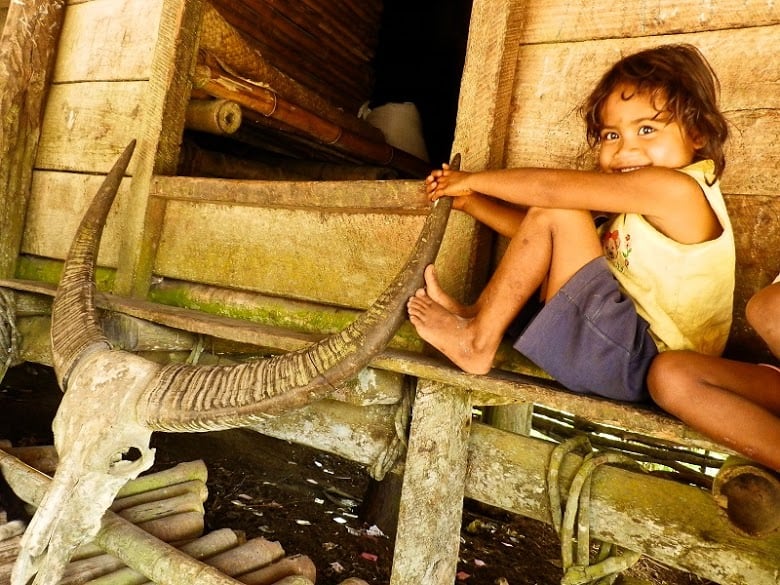
But even being a part of this myth was under threat, from secular rationality, from collective wisdom of organized big religions, from the stigma attached by the media, and simple economics which made ancestor veneration seem too expensive for its value. I hoped this world might linger around just a bit longer, only for me, to feel a little more permanent. I was being selfish for I had moved on, and these people of Sumba and Flores would also move on. Who was I to ask them to not put a mall around the Kelimutu lakes or to not abandon their elaborate traditional homes for Bahaus brick blocks with French names? But for now, I just wanted to dream a little bit more, soaked in this wet, wild world, where strangers walked around me in silence, watchful that nothing disturbs me, from this magical peace.
How to reach Flores and Sumba: In Flores, Labuan Bajo, Ende, and Maumere are the key ports of entry and exit. There are flights and ships from major towns in Indonesia to all these locations.
Waikabubak and Waingapu are the major towns of Sumba. To reach Waikabubak, the easy way is to fly from Bali to Tambaloka in Sumba and then take a two hour drive to Waikabubak. Another way to reach Sumba, richer in experience but poorer in terms of comfort is to take a ship from Pelni, the national Indonesian shipping company.
About the author: Writer, traveler, and photographer; Shivaji Das is the author of Journeys with the caterpillar: Travelling through the islands of Flores and Sumba, Indonesia. He was born and brought up in the north-eastern province of Assam in India. He graduated from the Indian Institute of Technology (IIT), Delhi, subsequent to which he completed his post-graduation from the Indian Institute of Management (IIM), Calcutta.
He is presently working as a management consultant in Singapore. Shivaji’s writings have been published in various magazines such as TIME, Asian Geographic, Venture Mag, Jakarta Post, Hack Writers, GoNOMAD, etc. He has also given talks on the culture of Flores and Sumba in Singapore, Morocco, China, Indonesia and Brazil. His photographs in collaboration with his wife, Yoland Yu, have been exhibited in the Darkroom Gallery, Vermont (USA), Kuala Lumpur International Photography Festival (Malaysia), the Arts House (Singapore), and the National Library (Singapore).
Besides travelling, Shivaji also takes an active interest in migrant issues and eradication of underage poverty and is associated with Singapore based organization Transient Workers Count Too (TWC2).Follow him on: Official Website, YouTube, Twitter, Facebook, Google+
About the book:
Elaborate funeral rites with sacrifices, volcanic lakes that change colour every few years, animist societies living in isolated villages, giant Komodo Dragons lurking behind kitchens.
“Journeys with the caterpillar” is a humble and humorous attempt to capture the dramatic simplicity of Nusa Tenggara Timur(NTT) in Indonesia, covering the islands of Flores, Komodo, Rinca and Sumba.
All royalties from this book are donated to Ayo Indonesia and Yayasan Harapan Sumba (YHS), two not-for-profits organizations in Flores and Sumba respectively. Get it on Amazon!
